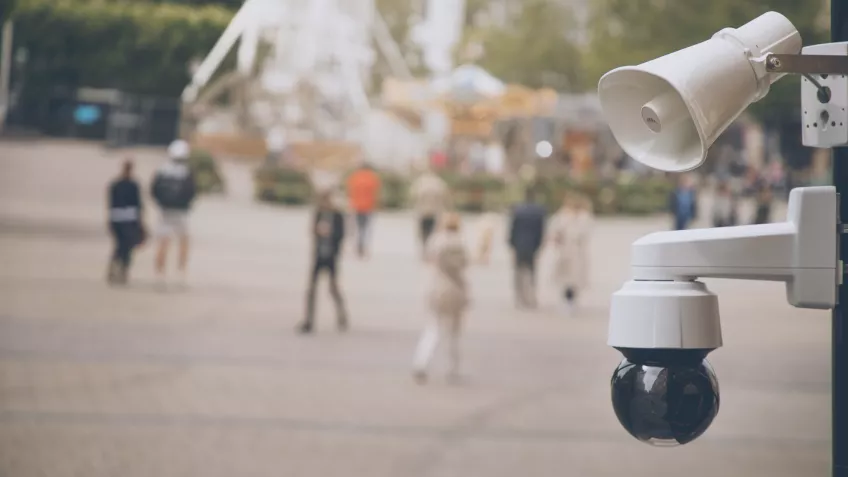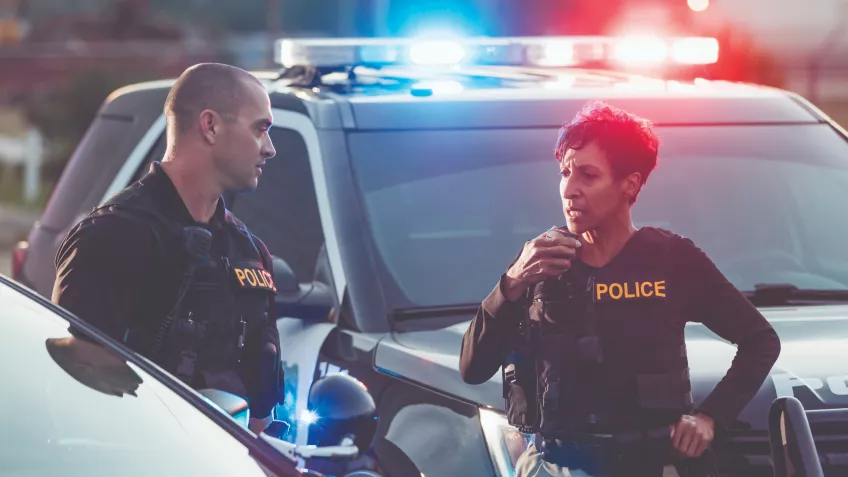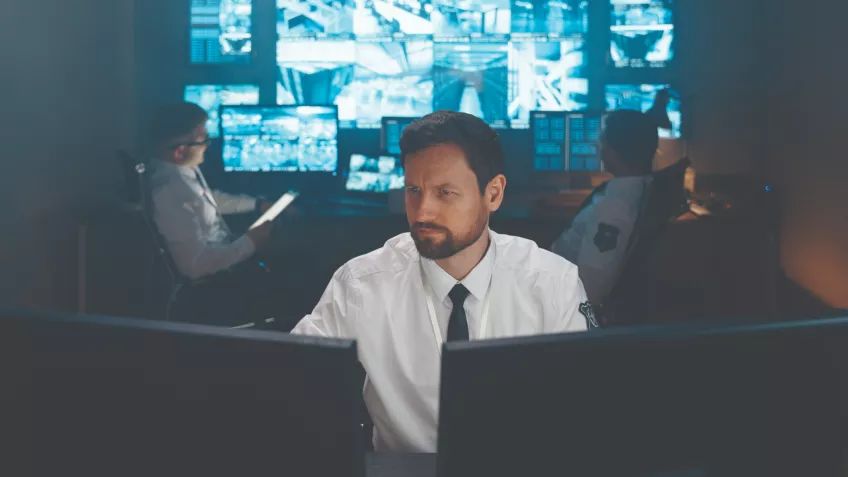
Public safety authorities, law enforcement and emergency services are tasked with protecting residents and visitors. This means implementing technology and processes which not only tackle crime and keep citizens safe, but also enable a fast response to emergency situations.
Given public sector budget constraints, innovative and scalable technology solutions have proven vital to improving citizen safety while optimizing resources. Implementing network video and audio solutions is key to building a smart city ecosystem that improves efficiency in citizen safety, emergency management and crime investigations.
Improving day-to-day citizen safety

Public safety officials and city planners use network cameras to collect data that helps them make the city safer for everyone. With a large number of cameras monitoring complex environments with people, vehicles and objects in constant movement, a huge amount of data is generated from city life each day. Analyzing the data through various dashboards provides important insights that enable decision makers to secure public safety planning including priorities, resources, and budget quickly.
Network cameras have been used to deter crimes for a long time. Just the presence of a camera as a “digital witness” can make offenders rethink their actions. However, network audio can also be a powerful tool for deterrence, both on its own and in combination with video. A camera can prompt an automated audio warning to an intruder or alert an operator to give a live warning using the audio system. This often deters the offender, preventing the need for additional security measures such as security staff being dispatched to the scene – optimizing resources and making the city safer.
Today intelligent video surveillance solutions can also be used to detect crowds, count people, measure social distancing, and collect insights for city planning to improve safety. While crowd management traditionally involved using video surveillance to count people in a crowded area and monitor the situation, combining intelligent, open surveillance solutions with video analytics takes this to the next level. For instance, if cameras are capturing supporters leaving a football stadium, analytics can be deployed to monitor pedestrian flow, predict congestion, and help safety authorities enable efficient crowd routing as well as flag when backup is required.
Preparing for emergency situations

In an emergency, every second counts. Ultimately, emergency services and law enforcement can only react as quickly as the system that informs them. To respond effectively, they require a detailed understanding of a situation and potential threats before they arrive at the scene.
Integrating video and audio solutions provides situational awareness so operators can collaborate closely with the police and emergency services to see, follow, and manage an incident or emergency in real-time – efficiently keeping citizens safe. For example, if a fire is reported, operators can access cameras in the area to get more details on where it is, whether it’s spreading quickly, and if anyone is injured. This insight can be shared with emergency services before they arrive at the scene so they can manage the incident and assist those in need of help immediately on arrival.
Network audio solutions also play a key role in informing the public of an incident and guiding people away from danger.
With products based on open technology, systems can be connected, and valuable information can be shared between organizations, whether private or public. So, if the fire was reported at a school, it would be critical for the operator to be able to access the school surveillance system for a complete picture.
Supporting and speeding up crime investigations

Video and audio evidence can be crucial for law enforcement to solve crimes and get suspects convicted. They require crystal sharp video that can stand up in the courtroom, so cameras must be able to capture high-quality footage in even the most challenging light and weather conditions. A city ecosystem can include a variety of camera and IoT solutions to capture this evidence – from PTZ cameras that detect and zoom in on a crime taking place to body worn cameras which provide evidence of exactly what a police officer saw and heard during an arrest. It can also be useful to deploy solutions for temporary surveillance, from monitoring construction worksites to city events, to access footage which could act as evidence if an incident occurs.
Additionally, network video and audio solutions play a central role in forensic search. A common challenge for security operators is managing the size of video surveillance systems within cities: it’s difficult to find the information and evidence needed. Innovative camera solutions, using a mix of edge and server-side video analytics as well as deep learning methods for detection, classification, and search, can help surveillance operators to detect incidents, or find a suspect, quickly.
Metadata essentially assigns digital meaning to each video frame, focusing on the objects and events within it. In other words, it adds intelligence about the scene instead of just offering raw video footage which must be processed manually. This metadata can include location, time, colors, sizes, shapes, coordinates, tracks, speed, duration in scene, direction of travel and so on. The latest smart search functions also support deep learning object and color classification. With search filters, you can quickly look through video materials to find persons, objects and vehicles of interest, speeding up investigations with the ability to review hours of footage in seconds.
Law enforcement agencies can use video surveillance technology to research patterns of behavior over time as well. Comprehensive video intelligence software collects and aggregates data, such as traffic volume and patterns, occupancy statistics and dwell times – presenting it in easy-to-use dashboards with graphs, heatmaps, and charts. With this statistical trend data, you can benchmark what is normal and configure real-time alerts to flag anomalies. For example, if police suspect that drug dealing is occurring, surveillance can be used to map people moving in and out of an address and identify patterns of behavior. Understanding these data patterns provides additional insight so police can be in the right place at the right time to catch the drug dealer red-handed.
Working efficiently to protect citizens
Combining intelligent network video and audio solutions that are effective in all weather and light conditions takes public safety to a new level. With this technology, you can not only ensure public order and tackle crime, but you can keep citizens safe in a more proactive, efficient way.
By investing in open, scalable solutions to build out a smart city ecosystem, stakeholders across the city can work together more effectively to improve citizen safety. Importantly, deploying open solutions also ensures that the technology you invest in today will be compatible with further smart city innovation – boosting public safety both today and in future.
